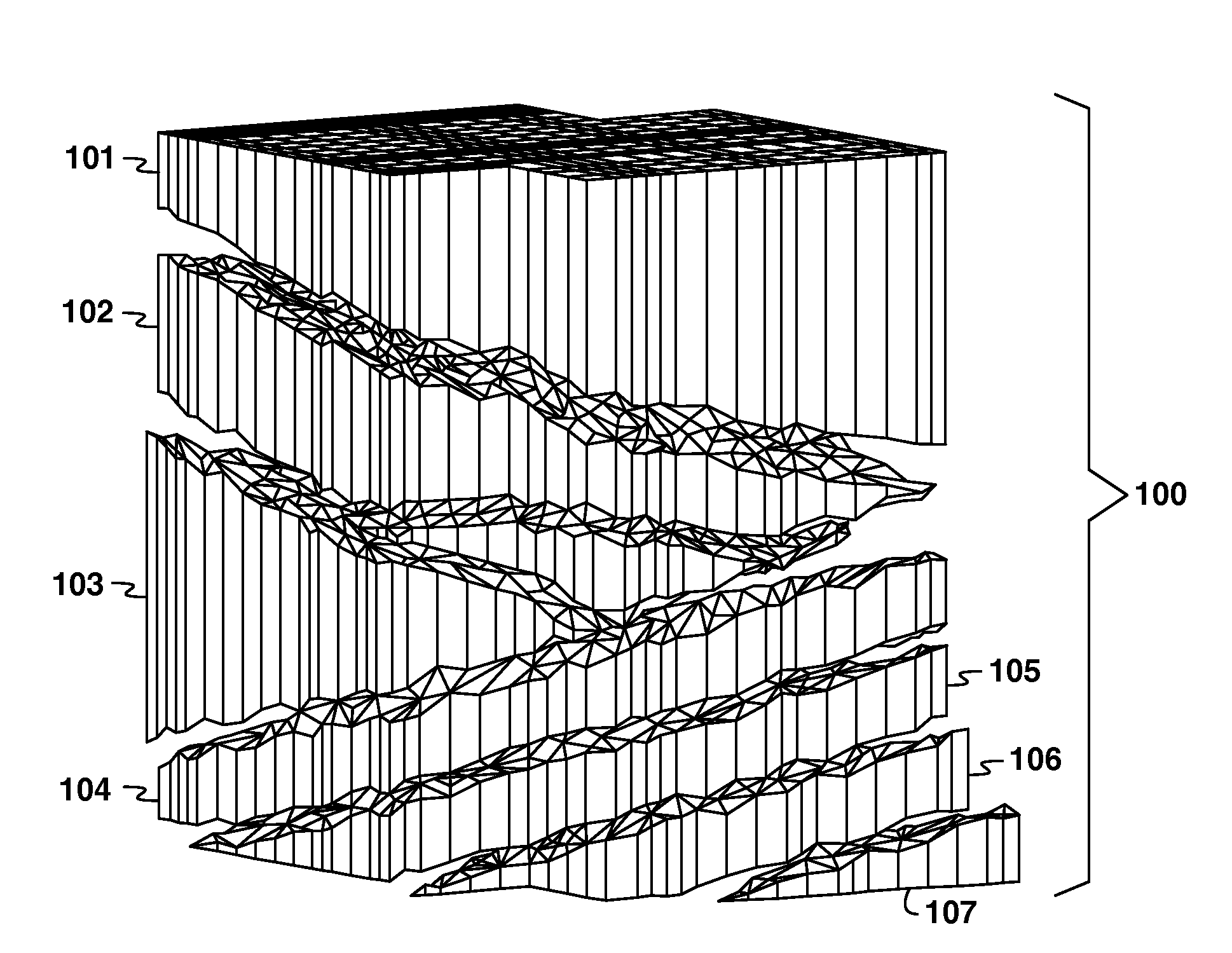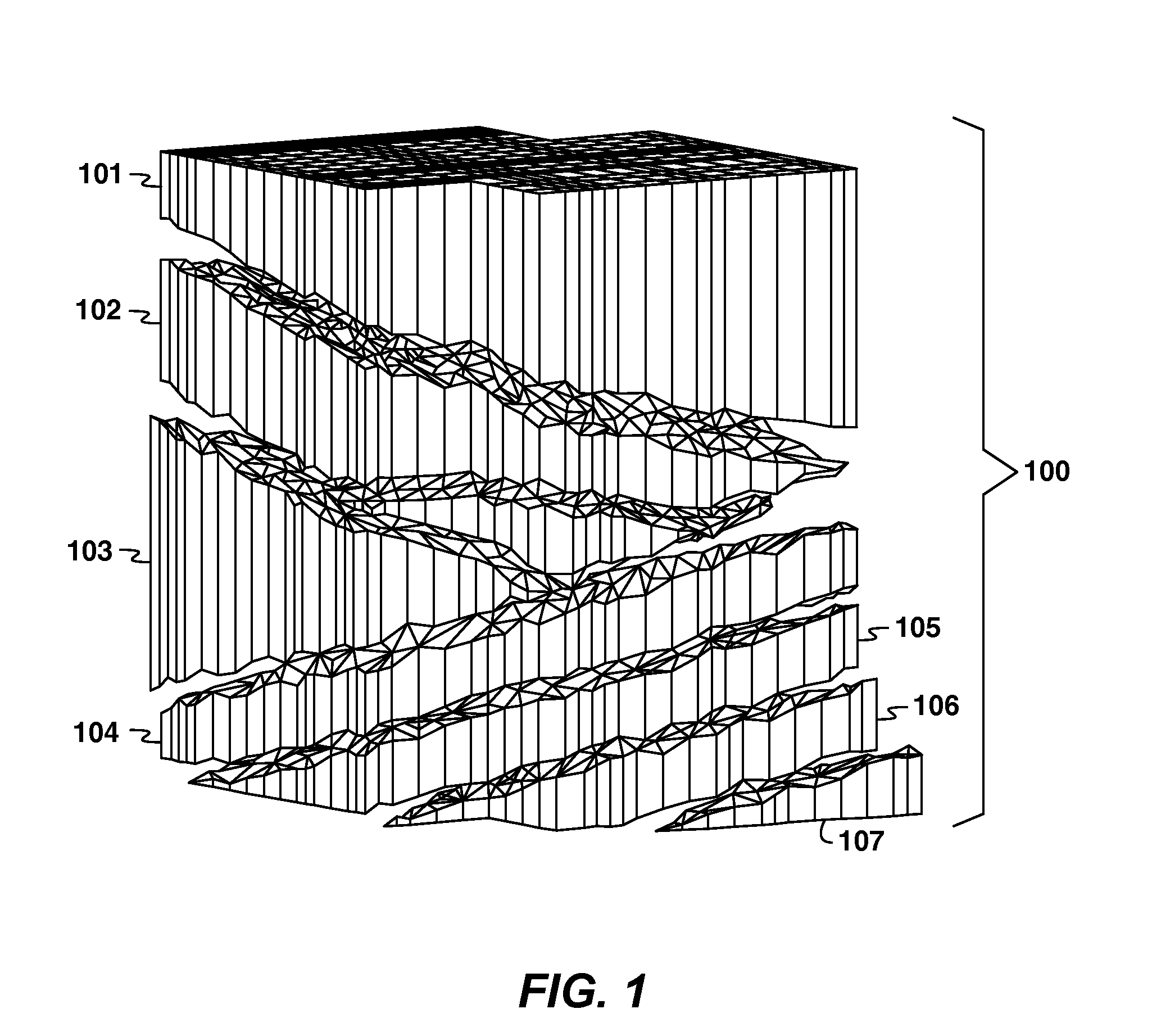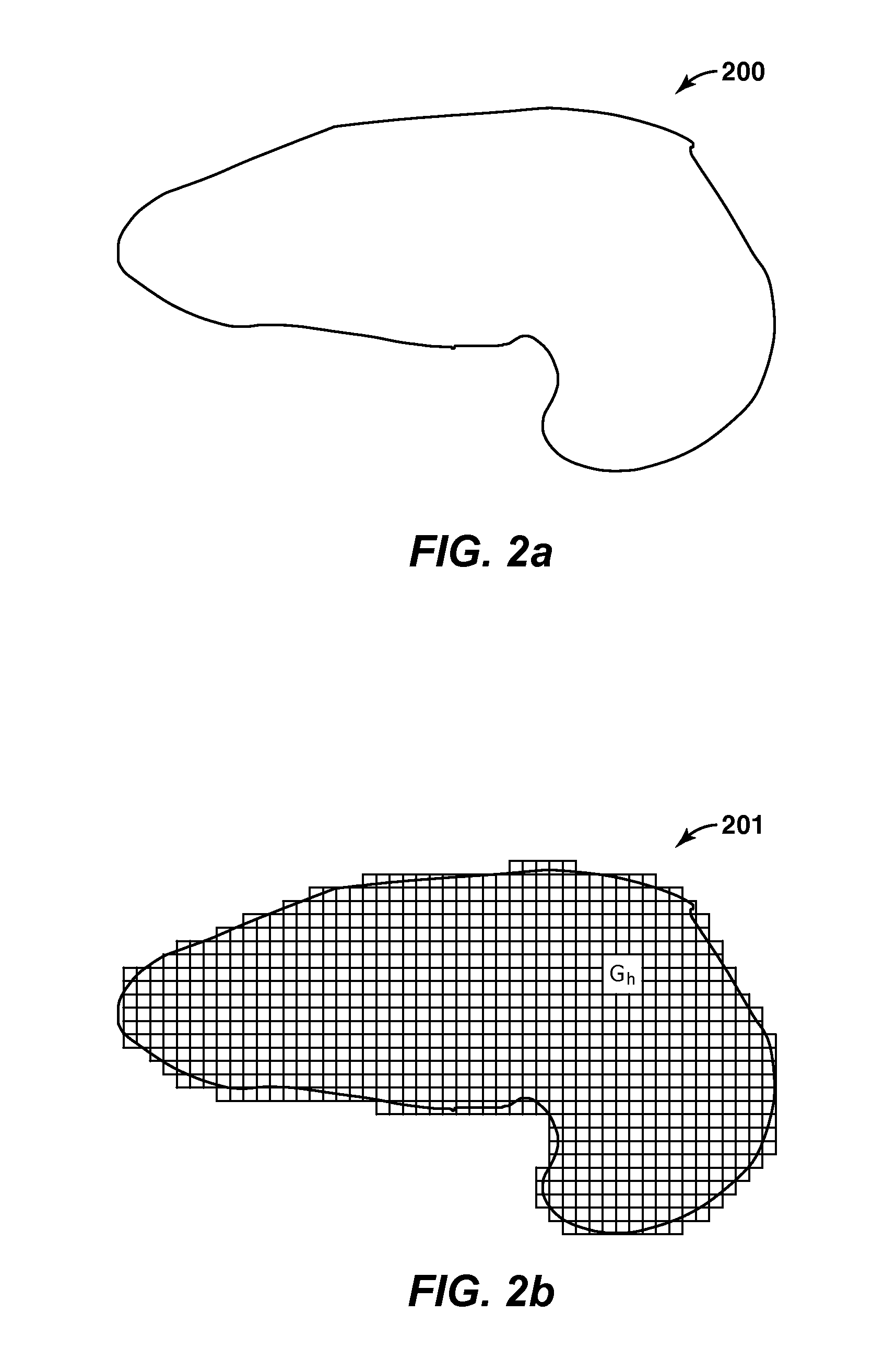Modeling Subsurface Processes On Unstructured Grid
a subsurface process and grid technology, applied in the field of computer modeling, can solve the problems of inapplicability, inability to model complex geometries, inaccurate and computationally expensive on unstructured grids, etc., and achieve the effect of expanding the number of unknowns and more accurate modeling
- Summary
- Abstract
- Description
- Claims
- Application Information
AI Technical Summary
Benefits of technology
Problems solved by technology
Method used
Image
Examples
Embodiment Construction
[0034]Embodiments of the invention are useful for modeling subsurface oil fields. The examples of the embodiments described herein may reference such oil fields. However, the embodiments may be used to model other domains involving other materials and / or processes. For example, other hydrocarbon materials may be involved, such as coal. Embodiments of the invention may be useful for mining or tunneling. Embodiments of the invention may be used for other domain types, e.g. the atmosphere, and may be useful for modeling the weather, temperature, and / or pollution. Another domain may be the oceans, and embodiments may be used to measure sound, temperature, saliently, and / or pollution. Any type of stratified domain may be modeled using embodiments of the invention. Any type of material that moves through a convection-diffusion process may be modeled using embodiments of the invention. Any type of flux that is present in the domain or material may be modeled using embodiments of the invent...
PUM
 Login to View More
Login to View More Abstract
Description
Claims
Application Information
 Login to View More
Login to View More - R&D
- Intellectual Property
- Life Sciences
- Materials
- Tech Scout
- Unparalleled Data Quality
- Higher Quality Content
- 60% Fewer Hallucinations
Browse by: Latest US Patents, China's latest patents, Technical Efficacy Thesaurus, Application Domain, Technology Topic, Popular Technical Reports.
© 2025 PatSnap. All rights reserved.Legal|Privacy policy|Modern Slavery Act Transparency Statement|Sitemap|About US| Contact US: help@patsnap.com



